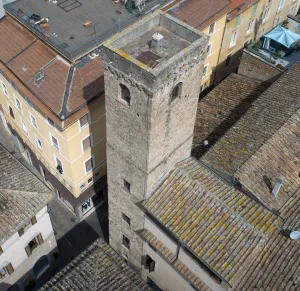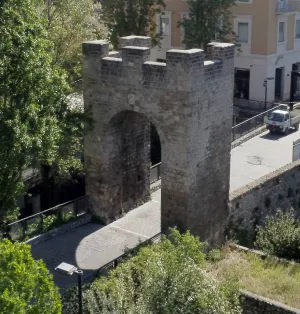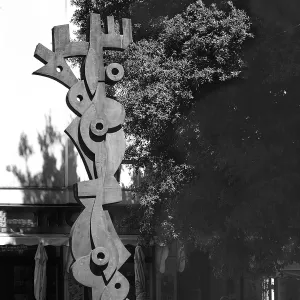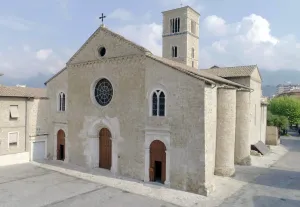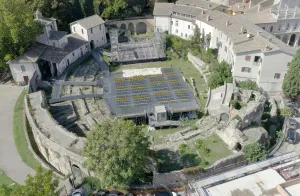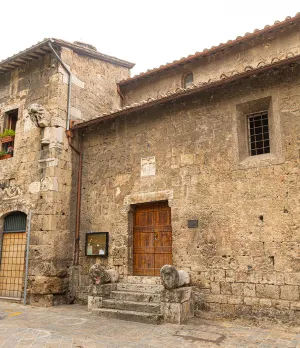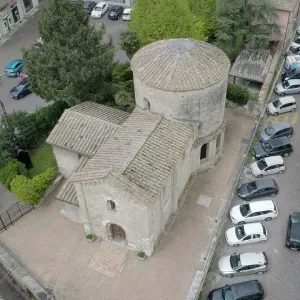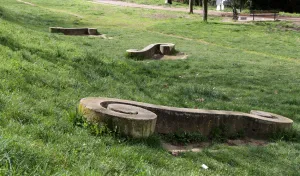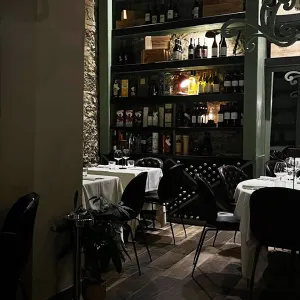Palazzo Manassei
In fact, the palazzo is said to have been the built by combining some pre-existing ancient buildings owned by the Tacitus family, the historian Cornelius and his descendents Appio Claudio and Annio Floriano, the latter both Roman emperors.
A "rumour" that arose from the fact that while carrying out work in that part of the city, remains from the Roman era of particular value came to light: numerous Tiberine stones, stones that were used for decoration and embellishment, large arches and together with all this, a headless statue, which represented a man wearing a toga who- it was prophesized- might have been Cornelius Tacitus.
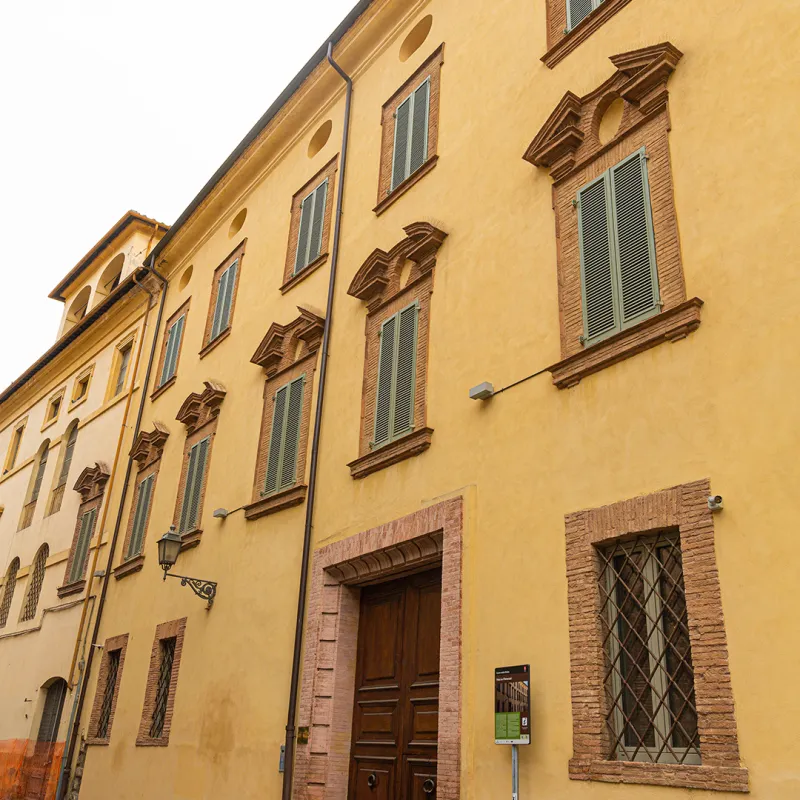
These houses, however, were purchased by one of the oldest noble families in Terni and in the years following 1420, on the initiative of Cipriano Manassei, the palazzo was built. Construction work lasted for decades and was completed by Stefano Manassei, at that time mayor of Florence.
The Manassei family, originally from France, moved to Italy before the year 1000. It counts among its ancestors the mayors of Florence, Orvieto, Todi; Barnaba Manassei, founder of Monte di Pietà; captains of the people (Florence again) until under Pope Alexander Vll, having become members of the Roman nobility, the Manasseis obtained feudal and vassalage rights over Collestatte and Torre Orsina. The first feudal lord was Antonio Manassei, who in Terni had married Anna Maria Mazzancolli, a member of a noble and wealthy family.
The lords of Collestatte and Torre Orsina did not remain confined to the two small centres of Terni’s Valnerina (Nera Valley) and almost immediately built their palazzo in Terni (in 1500).
The incorporation of the pre-existing residence gave rise to an irregularly-shaped façade that was nevertheless made more homogeneous in the 17th century when the building underwent radical renovation. During this period, the interior was renovated and various embellishments were also added.
The Manassei family sold the palazzo to a private company which used it as "capital" by leasing it (it was a school for several decades as well as the municipal art gallery and the "Briccialdi" music school) only to repossess it in recent years and after further restoration, use it as a private residence.
